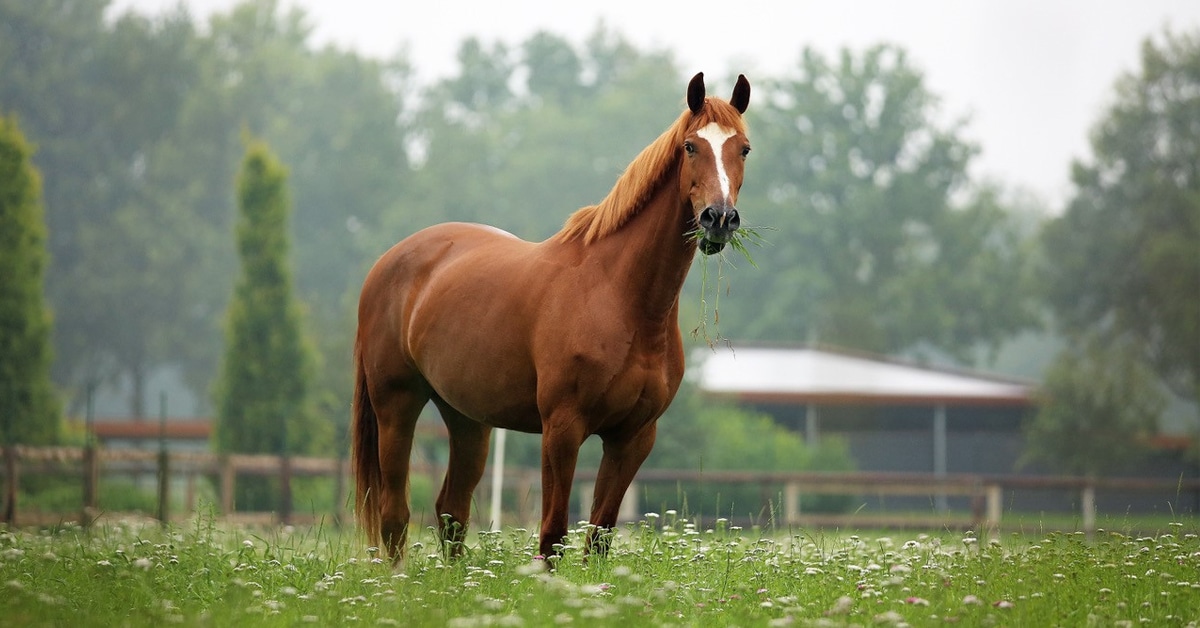Embryo transplantation is a viable option for owners of sport horse mares who do not want to put their careers on hold so that they can have foals. But what about the recipient mare? How much is it to lease one, what should you look for if you want to buy one yourself? Is just any mare suitable to be a surrogate mare?
Hans Hurkmans, a specialist in embryo transplantation and ICSI (Intracytoplasmic sperm injection) in horses and cattle in The Netherlands, has a donor station and IVF (in vitro fertilization) lab where embryos are transplanted in recipient mares. Whether fresh embryos that were recently flushed or embryos grown in the lab, he works together with four companies that lease a total of 450 to 500 recipient mares. He notes that when the embryos are frozen they are easier to transplant in a recipient mare, although the success rate of a fresh embryo to flourish is higher.
He answers some questions about mare suitability here:
Are there any mares for which you would advise against embryo transplantation or ICSI?
Sure! Last year I used a number of three-year-old mares for ICSI, mares who had never foaled before. I advise against this now, because these horses sometimes get complaints from the OPU (ovum pick-up). This is because the ovaries of young mares are harder to reach with the OPU probe, the instrument with which the oocytes (eggs) are harvested. In a mare that has foaled before, everything inside is more loose and you can easily reach the ovaries. But in mares with womb troubles, such as chronic uteritis or a badly closing cervix, embryo transplantation will not always be successful. Fertilization and flushing can be problematic. Such mares are more suitable for ICSI.
When is an embryo transplanted in a recipient mare?
You can stimulate a recipient mare to get in heat and monitor from the moment she is in heat. In the case of embryo transplantation this has to be closely combined with the cycle of the donor mare. An ICSI embryo can be transplanted on day 4 or 5 after the ovulation of the recipient mare, flushed embryos on day 5, 6 or 7 after ovulation. The recipient mares can also be used when they are spontaneously in season. Then the frozen embryo can be thawed and transplanted on the desirable day.
How much does it cost to lease a recipient mare?
The prices of leasing a recipient mare vary from 2,500 to 3,000 euro. A recipient mare is leased from 45 days of gestation up to 4 to 5 months after the birth of the foal. The costs may be increased by a guarantee. The guarantee will be returned after the recipient mare has returned after weaning the foal. The guarantee also serves to make sure that the mare, if she is, for example, sold abroad at an auction, will actually be returned to the owner after weaning.
Are all mares suitable to be recipient mares?
No, not all of them. You need mares with a solid fertility cycle, aged three to 15 years old. It is also important that the recipient mare is not too small. French trotters are very suitable as recipient mares. They are fertile and have often been used in the sport, so they are easier to handle and to work with.
What should you look for when buying a host mare?
It is an advantage when the mare has had a foal before, for then you know if she will be a good and careful dam. I advise to have the womb of the recipient mare checked upon purchase. The mare should have been properly vaccinated, be in good condition and have no stable vices.
More information on embryo transplantation is available at Hurkmans ET here.

